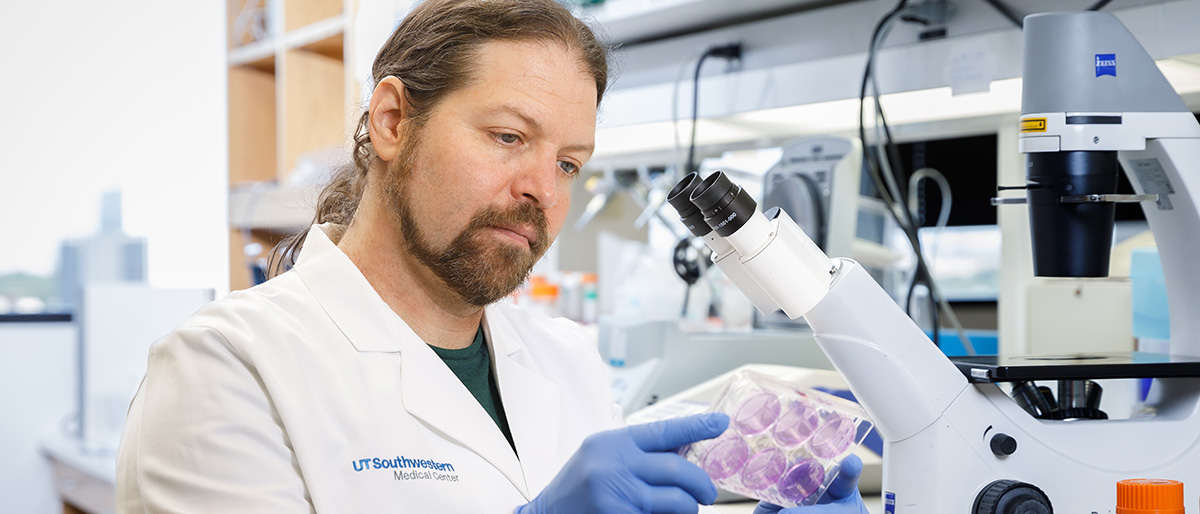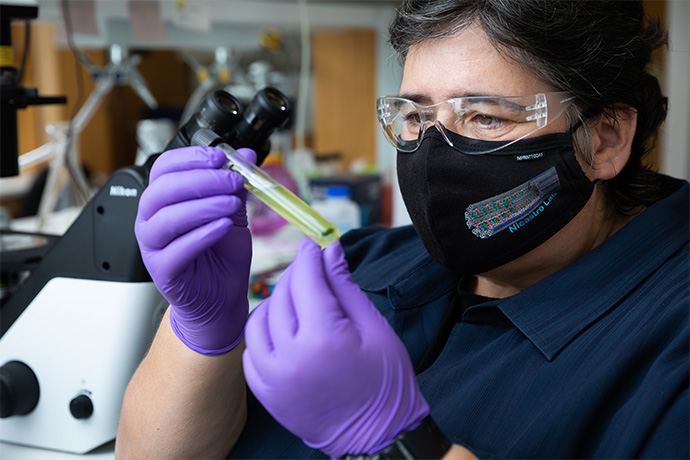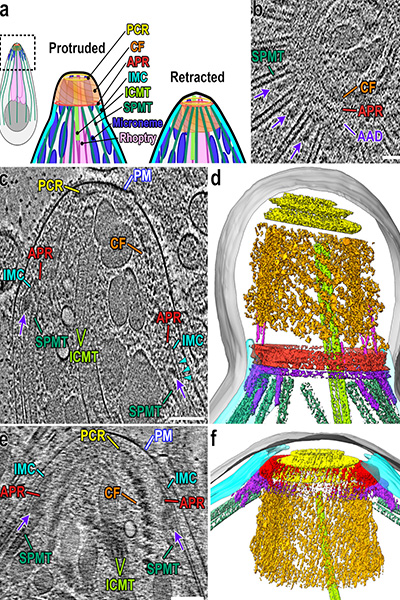Advanced microscopy reveals 3D structure of parasites’ cells

UT Southwestern scientists used cryo-electron microscopy (cryo-EM) to determine the 3D cellular structure of the machinery that a group of parasites linked to serious human and agricultural diseases uses to infect host cells.
There are more than 6,000 species of apicomplexan parasites, including those that cause mosquito-borne diseases, like malaria, as well as toxoplasmosis, which can be transmitted by exposure to the feces of infected cats or eating undercooked meat. Although toxoplasmosis causes few problems in healthy adults, it can severely harm developing fetuses and people with compromised immune systems, such as cancer patients.
The structure and motion of the apical invasion complex – a cone-shaped collection of cellular machinery at the front end of the parasites – have been poorly understood, said Michael Reese, Ph.D., Associate Professor of Pharmacology and Biochemistry, and Daniela Nicastro, Ph.D., Professor of Cell Biology.

The two researchers are co-corresponding authors of a study on this work published online by Nature Communications, while the lead author is Long Gui, Ph.D., a Research Scientist in the Nicastro lab.
The complex advances and retracts, activity thought to contribute to the release of biomolecular factors that help pathogens enter and infect their hosts. Those studying parasites had long believed that the apical machinery moves by expanding and compressing like a spring.
But this study, which used cryo-electron tomography (cryo-ET) to take a molecular-level look inside cells, found something quite different. Unlike earlier classical electron microscopy – which requires chemically fixing the samples, dehydrating them, and staining them or embedding them in resin – cryo-EM views flash-frozen samples to preserve them as close as possible to their native state. The samples are then viewed at minus 321 degrees Fahrenheit (cryogenic temperature).
“By using cryo-ET – a technique on which Dr. Nicastro is a master – we found that rather than working like a spring, the complex functions like a piston: protruding and retracting without changing shape,” Dr. Reese said. “We think this activity helps trigger the secretion of the important factors involved in both movement and infection, but we aren’t yet sure how.
“We also found that a ring at the ‘neck’ of the cells through which the cone-shaped machinery is pushed expands and contracts, which hadn’t been seen before.”
The study used two cryo-EM techniques. The first deployed a thin beam of gallium ions like a tiny sandblaster to slice away, or mill, the top and bottom layers of the cells under study. “That step is important, because even though parasite cells are relatively small, they are still 10 to 20 times too thick for cryo-ET imaging,” explained Dr. Nicastro. She helped plan and direct UT Southwestern’s Cryo-Electron Microscopy Core Facility, which opened in 2016 and operates around the clock, seven days a week.

The second technique is the cryo-ET itself, in which dozens of images are taken at different angles and then used to reconstruct the sample in 3D using enormously powerful computers.
Doing so, and comparing reconstructions of parasites with apical invasion machinery in the advanced and retracted states, enabled the researchers to see how the conical tips of the parasites moved.
“Similar to a CT scan, we record about 100 images from different viewing directions and use the ‘tilt series’ images to reconstruct the three-dimensional structure of the sample in a computer using a very low electron dose to avoid frying the sample,” Dr. Nicastro said.
The study demonstrates both the power of cryo-EM and its many techniques, as well as how much more there is to learn about parasites, Dr. Reese and Dr. Nicastro said.
“The tip of the parasites moves as a rigid body and is not spring-like as was previously suggested. Instead, the rings around the cone, previously thought to be rigid, dilate during the conoid protrusion,” Dr. Reese explained. “Furthermore, using cryo-ET, our data capture a snapshot of the parasites in the act of secretion during the protrusion step. Future studies will seek to better understand how the pumping action may help drive invasion and secretion.”
Other UTSW co-authors for this study include William J. O’Shaughnessy, a Research Assistant II in Pharmacology; Kai Cai, Ph.D., a Research Scientist in Biophysics, and Evan Reetz, a Histology Technician in Cell Biology.
The study received support from the National Institutes of Health (R01GM083122, R01AI150715), the Cancer Prevention and Research Institute of Texas (RR140082), the National Science Foundation (MCB1553334), and The Welch Foundation (I-2075-20210327).

